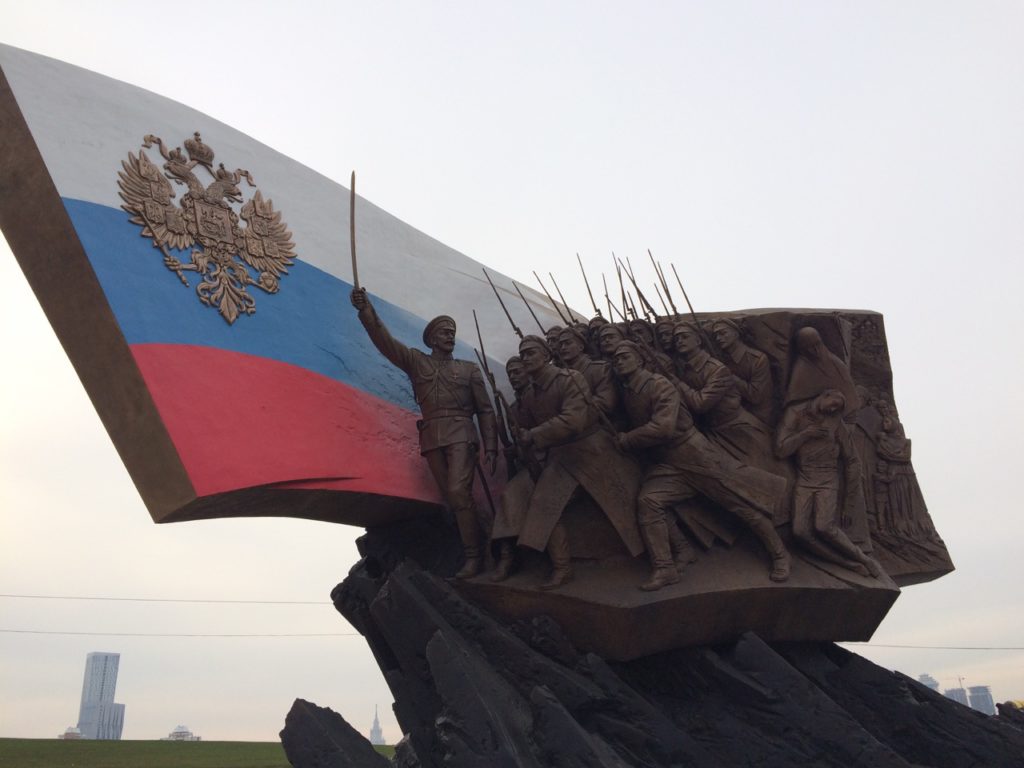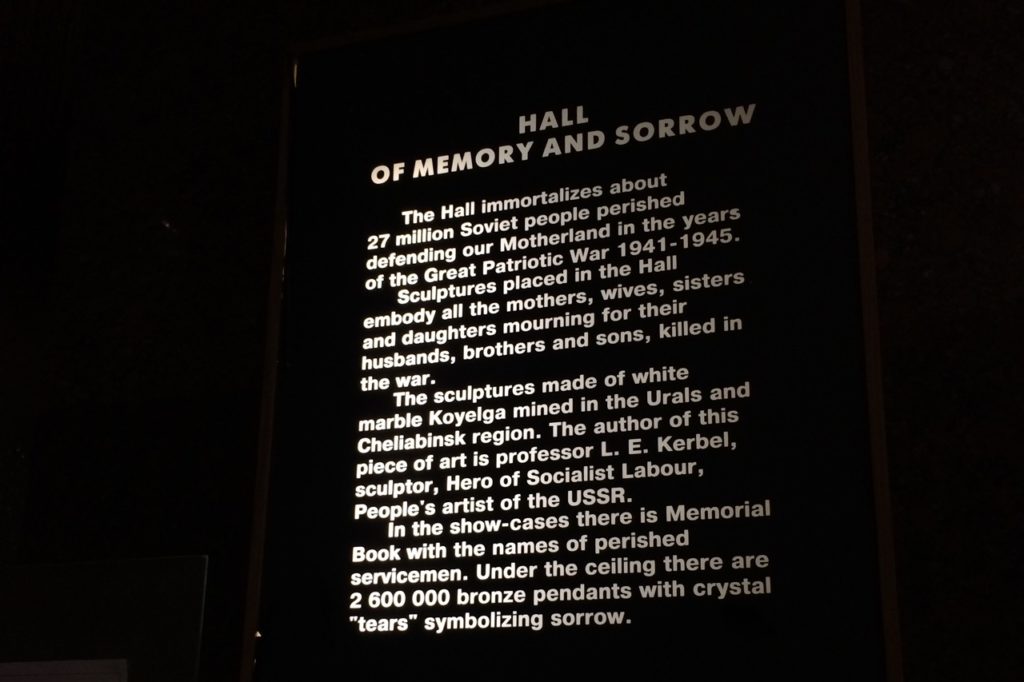An Exploration of Russian WW2 History
This last week/weekend was great. I had wrongly assumed that the weekend would be dull since we weren’t traveling. After two weekends of vacation, I had forgotten how much there is to do in Moscow.
On Thursday, Jordan and I decided to visit Victory Park. It’s only a few metro stops away from where we all live, so we figured it would be a great place to go before work. As it turns out, the escalator we took to get from the metro to the park is the longest escalator in Europe. It took nearly four minutes to get to the top of the escalator.

As we entered the park, the monuments immediately impressed me. Statues commemorating different wars and battles lined the walkway. This whole area is still under construction, so I am sure it will be even more spectacular once it is finished. We decided to check out the Museum of the Great Patriotic War (World War 2) while we were there.
Entrance to the museum is very inexpensive, so I highly recommend to my friends here in Moscow, as well as anyone who will be visiting Moscow in the future, to visit this incredible place.
The museum starts in the basement, and you work your way up. The ground floor has a large collection of photographs from the war. The thing that stood out to me the most in this area were the composite photos of Russia during the war and Russia now. It was amazing to see all of the destruction and to see the same area completely restored 50 years later. It appears as though it had never happened, but these photographs serve as a reminder that the streets of Moscow weren’t as safe as they are now.
The Hall of Memory and Sorrow
At the end of this room lies the Hall of Memory and Sorrow. The ceiling of the hall is decorated in chains and crystals. Each chain is representative of the people who died in the war effort. There were 27 million Soviet people who died during the duration of World War Two. There are 2,600,000 chains in this room. You do the math. The crystals on the chains are representative of tears shed for the dead. The floor in the hall has books on display. Each display shows a different region of the U.S.S.R. Inside each book is the name of every person who died defending Russia. The main attraction lies at the end of the hallway, as an angel mourns the death of one of the Soviet people. The lights give the statue a heavenly, halo effect.
This hall is such a reverent and sorrowful place. I didn’t anticipate what a strong reaction I would have to this room. Although I am not Russian, I sympathized with this strong group of people who had once been broken by war. Despite how reverent this place was, many people completely disrespected it. People were talking loudly and laughing, completely unaltered by the amount of history and pain in front of them.
We then wandered through some of the other displays. I was amazed once again by the rich history. Each room was covered in murals of the war in different regions. You got a panoramic view of everything happening in the area. The foreground had tanks and machinery, which provided us with a 3D look at the war. I was amazed by how perfectly each room was blended. If you took a tour, you got to have the sound system on, where you would hear muffled sounds of explosions, gunshots and screaming. I could hear the audio presentation in different rooms, so I got a little idea of what it would be like in the room.
Several things stood out to me during this experience. The first is that the Russian people do not forget to honor and recognize the people who were helping with the war efforts behind the scenes- the people who were supplying the troops with food, weapons, and medicine. Another thing that stood out to me was that the Russians don’t try to sugarcoat the war. Every painting is bloody and gory. Most American war monuments show only the bravery of our soldiers, not the actual suffering involved. It was kind of interesting that they showed war how it really is.
The remainder of the museum showcased weaponry, clothing, artwork, and photographs. There was a section dedicated to concentration camps. Since I have been to the Mauthausen concentration camp in Austria, I felt really attached to this part of the museum.
All in all, I think the Museum of the Great Patriotic War is amazing. Everyone needs to see it. You get a different take on history, which is wonderful. Accepting history for only what you read in your high school history class, gives you only one small part of the story. There’s more than one side to every story, and we should all take the time to learn and appreciate each side.
All my love,
Madison



0 Comments